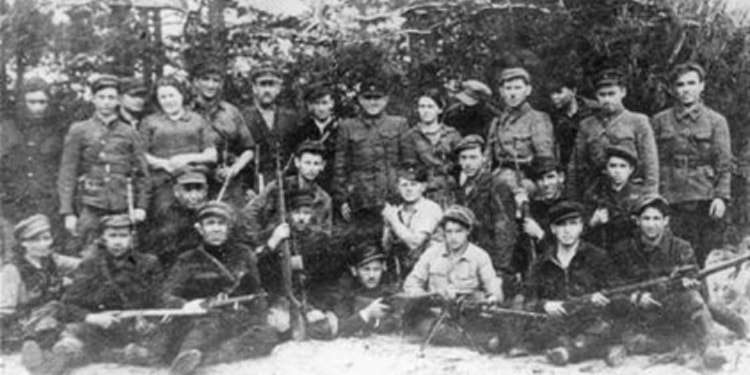The Bielski Brothers Spark a Jewish Resistance
The Fellowship | October 2, 2020

After experiencing the heartbreaking loss of their parents at the hands of the Germans in December 1941, three surviving brothers decided to take action. Tuvia, Asael, and Zus, who lived in Nazi-occupied Belorussia (now Belarus) formed a partisan group, which would eventually save more than 1,200 Jews during the Holocaust and be one of the most successful rescue efforts of Jews during World War II.
First Step
First, the brothers fled to nearby forests with 30 other family members and friends. They decided Tuvia would be the commander of the group, Asael the deputy, and Zus in charge of reconnaissance. After growing up as a Jewish farming family the brothers knew the geography of the land of Western Belorussia very well, which helped them successfully hide from German officials.
Then, they acquired arms from non-Jewish friends. The group started to grow as the brothers encouraged Jews from the surrounding areas to escape, and often sent guides to the ghettos to help usher Jews to the safety of the forest. In fact, in 1942, they rescued over a hundred Jews from the Iwie ghetto after learning the Germans planned to liquidate it. By the end of 1942, the Bielski group had over 300 people.
Permanent Base
The Bielski group finally decided to set up a base in in the Naliboki Forest, where they established a community and resources to help them hide. The forest was the ideal spot, since it was under the administration of Soviet partisans and the German forces were not present.
Here, the group grew and a Jewish community was formed. They never turned away any Jewish refugee, and actually employed them as skilled workers, establishing a mill, a bakery, and laundry. They even had a school and synagogue.
The community’s success also was aided by Tuvia’s friendship with the regional Soviet partisan commander, General Vasily Yefimovich Chernyshev. After establishing this relationship, the Bielski fighters joined forces with the partisans.
Liberation
When the Soviet Army liberated all of Belorussia in 1944, the Bielski group included about 1,200 people, and more than 70 percent of these were from vulnerable groups of women and children and the elderly. These people would have likely perished at the hands of the Nazis, had it not been for the Bielski Brothers showing how important resistance, solidarity, and compassion truly were during such a dark time in history.
After the war, the brothers Tuvia and Zus immigrated to the Holy Land where they fought in the Israeli army during the 1948 war. They eventually immigrated to the United States.
Throughout his leadership, Tuvia was focused on one thing – saving as many Jews as possible. He said, “Don’t rush to fight and die. So few of us are left, we need to save lives. It is more important to save Jews than to kill Germans.” And the brothers not only helped Jews survive, they provided a safe haven and community for so many vulnerable people.
